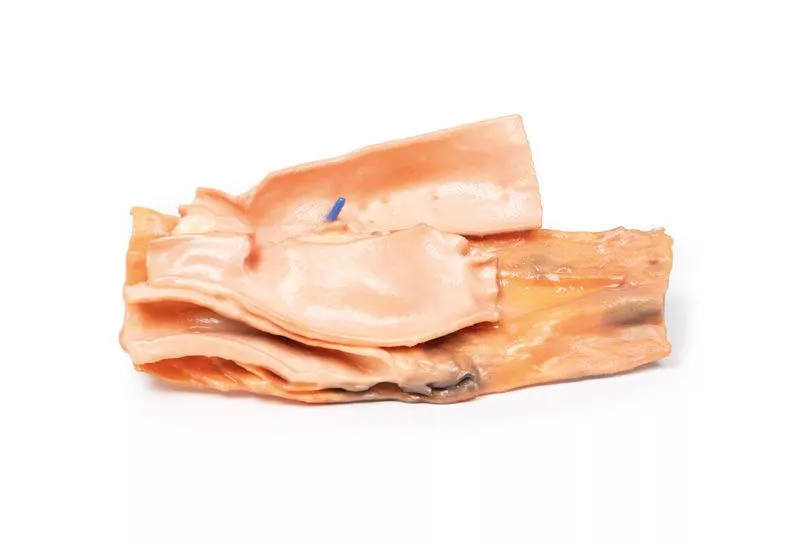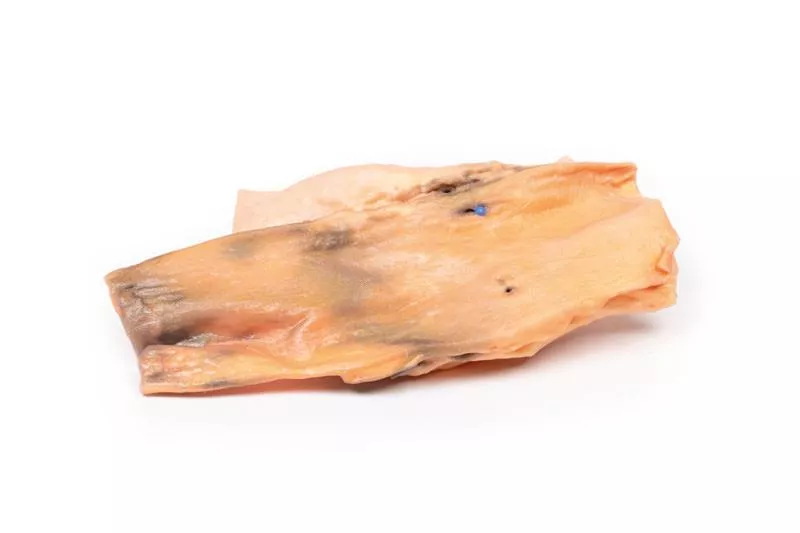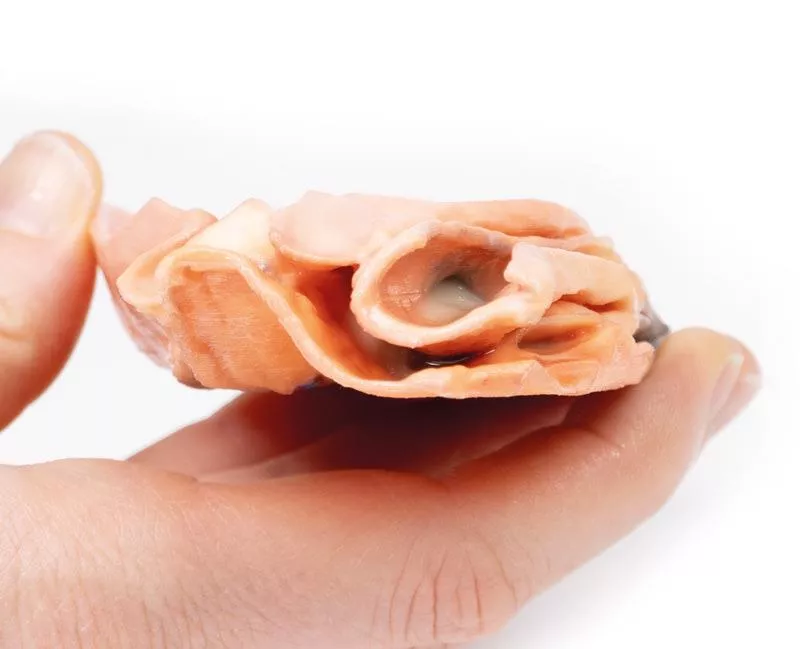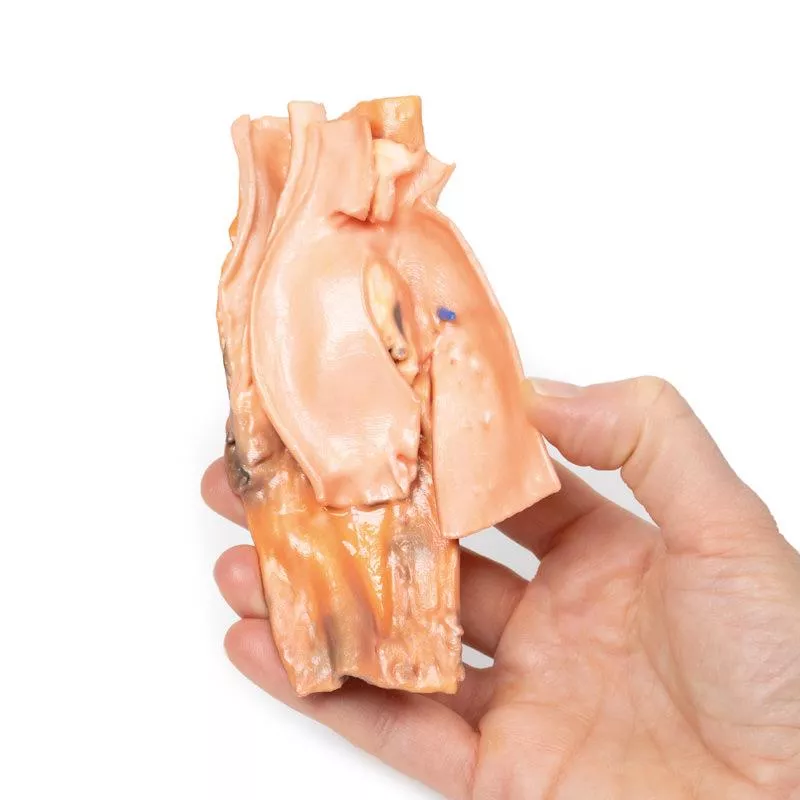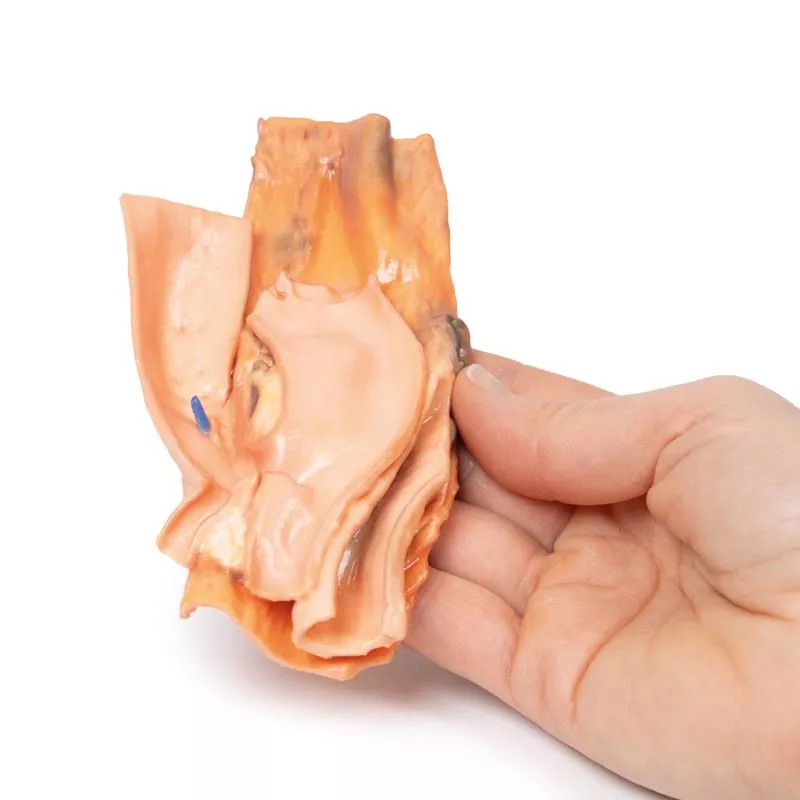Product information "Traumatic Oesophageal-aortic fistula"
Clinical History
A woman swallowed a chop bone during lunch and later collapsed, suffering a massive haematemesis. At laparotomy, the stomach was filled with fresh blood, but the cause was not identified. She died the next day. Necropsy revealed a communication between the aorta and the oesophagus.
Pathology
The specimen includes the distal trachea, aortic arch (opened coronally and viewed anteriorly), and oesophagus (opened longitudinally). The oesophageal mucosa is ulcerated and haemorrhagic. A small probe shows a fistula connecting the oesophagus with the posterior wall of the thoracic descending aorta.
Further Information
Though this case was caused traumatically, aorto-oesophageal fistulas can also arise non-traumatically from aortic aneurysms compressing the oesophagus, gastrointestinal cancers, or erosion of aortic grafts into the digestive tract. Such fistulas can occur anywhere along the aorta. They are life-threatening and commonly present as gastrointestinal bleeding, ranging from minor bleeding to massive haemorrhage causing haemodynamic collapse. Symptoms include melaena, frank bleeding in stools, or haematemesis as in this case. Smaller fistulas may cause malaise or limb ischaemia due to reduced blood flow. Diagnosis can be challenging and depends on patient stability. Stable patients may be evaluated by endoscopy or CT angiography, while unstable patients often require urgent laparotomy and blood transfusions.
A woman swallowed a chop bone during lunch and later collapsed, suffering a massive haematemesis. At laparotomy, the stomach was filled with fresh blood, but the cause was not identified. She died the next day. Necropsy revealed a communication between the aorta and the oesophagus.
Pathology
The specimen includes the distal trachea, aortic arch (opened coronally and viewed anteriorly), and oesophagus (opened longitudinally). The oesophageal mucosa is ulcerated and haemorrhagic. A small probe shows a fistula connecting the oesophagus with the posterior wall of the thoracic descending aorta.
Further Information
Though this case was caused traumatically, aorto-oesophageal fistulas can also arise non-traumatically from aortic aneurysms compressing the oesophagus, gastrointestinal cancers, or erosion of aortic grafts into the digestive tract. Such fistulas can occur anywhere along the aorta. They are life-threatening and commonly present as gastrointestinal bleeding, ranging from minor bleeding to massive haemorrhage causing haemodynamic collapse. Symptoms include melaena, frank bleeding in stools, or haematemesis as in this case. Smaller fistulas may cause malaise or limb ischaemia due to reduced blood flow. Diagnosis can be challenging and depends on patient stability. Stable patients may be evaluated by endoscopy or CT angiography, while unstable patients often require urgent laparotomy and blood transfusions.
Erler-Zimmer
Erler-Zimmer GmbH & Co.KG
Hauptstrasse 27
77886 Lauf
Germany
info@erler-zimmer.de
Achtung! Medizinisches Ausbildungsmaterial, kein Spielzeug. Nicht geeignet für Personen unter 14 Jahren.
Attention! Medical training material, not a toy. Not suitable for persons under 14 years of age.



















